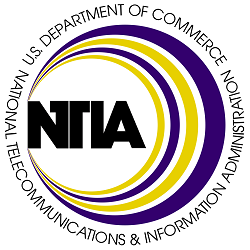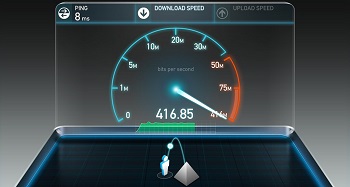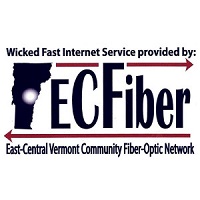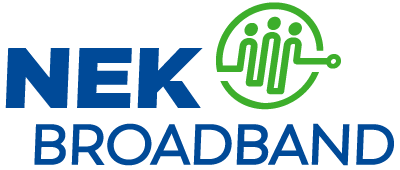
Fast, affordable Internet access for all.

The key for states to unlock their portion of the $42.5 billion in federal BEAD funds is the submission and approval of their Five Year Action Plans and Final Proposal. The infrastructure law requires states to first file an action plan, and then prepare more detailed Initial Proposals, allowing residents and stakeholders to submit public comments.
So far, 14 states have filed their Five Year Action Plans with the National Telecommunications and Information Administration (NTIA), the Treasury Department agency in charge of allocating the funds to each state and U.S. territory. According to the NTIA’s website, Maine, Louisiana, Delaware, Georgia, Hawaii, Idaho, Kansas, Montana, North Carolina, Ohio, Oregon, Pennsylvania, Utah, and Vermont have all filed their draft Five Year Action Plans.

The states that are now in the process of completing their Initial Proposals include: Delaware, Kansas, Louisiana, Montana, Ohio, Tennessee, Vermont, Virginia and Wyoming.
Today, we will look at two states (Maine and Louisiana) and follow up with the others as we are getting a clearer picture of how each state intends to put this historic infusion of federal funds to use.
Maine
In this week’s round-up of broadband news, we culled three stories we think are worth reading.
How Much is Fast Enough?
The first is a story from Ars Technica – FCC chair: Speed standard of 25Mbps down, 3Mbps up isn’t good enough anymore – written by veteran IT reporter Jon Brodkin.
For years now, broadband-for-all advocates have lamented the FCC’s minimum broadband speed standard of 25 Megabits per second (Mbps) download and 3 Mbps upload as being laughably antiquated. Indeed, it’s been almost three years since we made the case for Why 25/3 Broadband Is Not Sufficient, though it was outdated long before then.

But as Brodkin reported this week, the FCC’s minimum speed standard “could finally change under Chairwoman Jessica Rosenworcel, who is proposing a fixed broadband standard of 100Mbps downloads and 20Mbps uploads along with a goal of bringing affordable service at those speeds to all Americans.”
Under Rosenworcel’s plan, the FCC would look at availability, speeds, and prices to determine whether the agency should take regulatory actions under Section 706 of the Telecommunications Act, which requires the FCC to determine if high-speed Internet access is being deployed "on a reasonable and timely basis" to all Americans.
Now that there’s broad consensus high-speed Internet connectivity should be universally accessible, there’s no shortage of broadband news/content floating around out there.
There’s the wheat (more truthful, useful, and informative stuff); the chafe (a mundane grain of truth buried under a steaming pile of bs), and a vast spectrum of perspectives in between.
In this new space we will highlight insightful news stories, blog posts, podcasts, or videos we’ve come across over the past week or so – with an eye to separate the signal from the noise.
Downloading now …
What Happened to Gigi?
While the FCC has been defanged in many ways, the agency is still at the center of our shared telecommunication ecosystem. So when President Biden nominated Gigi Sohn to serve as the fifth and final commissioner to break the 2-2 partisan deadlock at the agency, numerous consumer and public interest groups were ecstatic. The nation’s telecommunication workers backed her nomination. She even had the respect and quiet support of a number of conservative lawmakers.
But her nomination was sunk by a vicious smear campaign, which led her to withdraw herself from consideration in March.
At the Broadband Communities Summit in May she described the process both like being put in a “washing machine full of rocks” and going through “a 16 month proctology exam.”
It was a big week for ECFiber as Vermont’s first – and oldest – Communication Union District (CUD) celebrated lighting up the last hub of its 1,500 mile-network in White River Junction.
To mark the occasion of connecting the “golden patch cord” that will extend high-speed Internet service to eight more communities in the Upper Valley region, White River Junction’s VFW Hall was packed this past Tuesday with CUD officials, local and state leaders, enthusiastic residents, and U.S. Sen. Peter Welch. They were there to celebrate what ECFiber officials liken to “the Golden Spike moment tying the first transcontinental railroad together.”

After a 30-piece band played marching tunes, ECFiber Chairman F.X. Flinn marched to the podium to describe the meaning of the moment.
"It’s come to fruition today with a lighting of the White River Junction hub," he said. "This is the last piece of the puzzle for the network we originally envisioned that would bring world-class broadband to every home and business in the 23 member towns that originally voted town meeting day 2008 to create ECFiber."
Sen. Welch, an ECFiber subscriber who also spoke at the event, credited the state’s community broadband approach as the linchpin to solving the state’s digital divide:
“If we in rural Vermont were going to depend on the big telecommunication companies to wire our homes and get us Internet, we’d be waiting until our grandchildren had grandchildren. It wasn’t going to happen.”
Eight More Towns Join CUD
Suwannee Valley Electric Cooperative (SVEC) has begun construction on an ambitious new fiber deployment that will soon bring affordable, multi-gigabit fiber access to all of the cooperative’s existing electrical customers in rural Northern Florida.
Cooperative officials tell ILSR its three-phase build out is well underway, with a beta anticipated this summer and the first commercial customers connected by August. SVEC Communications Director Jon Little says the cooperative’s goal remains to deliver affordable fiber to all 20,000 of the cooperative's current electric customers by the end of 2026.
“We’ve broken our territory into three phases based partly on population or possible customers,” Little said.
The cooperative’s recently created subsidiary, Rapid Fiber Internet, will interface directly with subscribers, while Conexon manages deployment of more than 4,100 miles of fiber. Electrical users won’t see price hikes; the projected $93 million deployment cost will be funded by a combination of grants and loans paid back exclusively through user subscriptions.

Little told ISLR that make ready (preparing utility poles for fiber attachments) prep and engineering for phase one are complete, and make ready construction for phase one is roughly 40 percent complete. He added that primary fiber construction for phase one is roughly twenty percent complete.
“We’re hoping that we will have a group of beta customers starting next month,” Little said. “We want to go about a month to get their feedback, and so we’re still hoping sometime in August to offer hookups to our members on that first feeder.”
The United States Department of Agriculture (USDA) has awarded a $17.5 million grant to NEK Community Broadband (NEK Broadband), providing another shot in the arm for Vermont’s fast-growing collection of Communications Union Districts (CUDs). Such CUDs continue to play a starring role in Vermont’s efforts to finally conquer the digital divide.
NEK Broadband’s latest grant comes from the USDA’s ReConnect Loan & Grant Program, which helps defray the costs of network hardware and broadband deployment to rural and traditionally underserved U.S. markets.
The program this week doled out an additional $714 million in grants and loans to projects across 19 states.
NEK Broadband officials say its $17.5 million award will be combined with a $5.8 million investment to deliver affordable fiber access to 3,295 homes, 94 businesses, 183 farms and 11 educational facilities across 22 towns in Orleans, Caledonia, and Essex counties in Vermont.

“For too long, large pockets of our state have been denied this critical resource because companies haven’t found it profitable enough to invest,” Vermont Senator Bernie Sanders said in an announcement of NEK’s latest grant. “This federal funding is transformative, because the money is going directly to the very communities who will benefit, instead of having to go through those who care more about profits than delivering service.”
Two months after President Biden’s belated and long-stalled Federal Communications Commission (FCC) nominee withdrew her nomination after a year-long attack campaign against her, today at the Broadband Communities Summit in Houston, Texas, Gigi Sohn announced her next move: Sohn will serve as the first Executive Director for the American Association of Public Broadband (AAPB).
A non-profit organization formed by a group of municipal officials, AAPB’s mission is to advance advocacy efforts on behalf of publicly-owned, locally-controlled broadband networks. Since the organization first announced its formation at the Broadband Communities Summit in May of 2022, it has been working to educate federal and state policymakers who “have turned to the telecom lobby for help and are receiving biased guidance” on the community broadband networks approach, just as $42.5 billion from the Infrastructure Investment and Jobs Act (IIJA) is set to flow to state governments to expand high-speed Internet access this summer.
During a keynote luncheon at the summit, Sohn was joined by AAPB founding board members Bob Knight and Kimberly McKinley on the main stage for a candid discussion in which she reflected on the state of Internet access in the U.S. and her experience that led to her to withdraw her nomination to the FCC. Near the end of the luncheon she announced her new role with AAPB, which was greeted by a standing ovation from the hundreds of attendees in the audience.
Freedom to Choose Community Broadband Future
The announcement was followed by a press briefing where she elaborated on her vision for AAPB.
“I will be the first Executive Director of the American Association of Public Broadband. Until now, there has not been a membership-based advocacy organization that works to ensure that public broadband can grow unimpeded by anti-competitive barriers. That’s despite the success of public broadband to help places like Chattanooga and the Massachusetts Berkshires transform from sleepy hamlets to vibrant centers of economic opportunity, education and culture,” she said at the press briefing.
The South Carolina Broadband Office (SCBBO) has announced 56 newly funded projects through its new broadband grant program, which state leaders say will dramatically improve resident access to affordable, next-generation broadband networks statewide.
South Carolina historically hasn’t been a hotbed of community broadband deployment, and is one of 17 states that have passed restrictions on municipal network creation, funding, and expansion. Still, there are numerous electric cooperatives in the state busy creatively bridging the digital divide that stand to benefit from an historic infusion of new grant funding.
The state’s latest round of funding comes courtesy of South Carolina’s American Rescue Plan Act, State and Local Fiscal Recovery Funds Priority 1.0 program (ARPA SLFRF 1.0).
All told, the SCBBO says it has doled out $129.6 million in broadband grand awards to 15 different Internet service providers (ISPs) across 34 different South Carolina counties.
“We are incredibly excited about this next chapter of broadband expansion in South Carolina,” Jim Stritzinger, Director of the SC Broadband Office said in a statement. “Across the state, most have probably noticed the ISP road crews working diligently to provide high-speed internet access to our homes and businesses. This set of investments will provide a substantial boost to the work that is already underway.”
According to state officials, All ARPA SLFRF 1.0 grants are required to be completed by December 31, 2024. Once completed, the state says these grants will have funded 5,000 additional miles of fiber statewide as well as last mile access to at least 38,995 locations.
Connect Humanity and the Appalachian Regional Commission (ARC) have struck a new $7.9 million coalition partnership they say will help deliver affordable, next-generation broadband networks to more than 50 communities across 12 Appalachian states.
The project announcement states ARC has already awarded $6.3 million via its new Appalachian Regional Initiative for Stronger Economies (ARISE) program, which is designed to help marginalized communities prepare for the more than $45 billion in Broadband Equity, Access, and Deployment (BEAD) and Digital Equity Act (DEA) funding arriving later this year.
Funding from both programs is currently bottlenecked behind the Federal Communications Commission’s longstanding and troubled efforts to accurately map broadband access. That’s been a particular problem in rural America, where fixed and wireless broadband providers have overstated real-world broadband access for the better part of a generation.
ARC data indicates that rural Appalachian communities, which stretch from New York State to Mississippi, are far more likely to have been left stuck on the wrong side of the digital divide. That’s thanks in part to telecom monopolies that either refuse to revest in lower ROI rural areas, or have failed to live up to past taxpayer subsidization obligations.
Connectivity in the region lags well behind the national average, and in 26 Appalachian counties, fewer than 65 percent of households have a broadband subscription. 88 percent of Appalachian households currently have one or more computer devices—nearly four points below the national average. Only 23 Appalachian counties were at or above that same national average, and all of them were in metropolitan areas.

This week on the show, Christopher is joined by Senior Researcher Ry Marcattilio for a conversation about on-the-ground work in a rural county in Minnesota. After joining a listening session with local elected officials, the district representative, and the broadband action team, Christopher and Ry hop in the studio to reflect on what they heard. From grant requests that have gotten short-circuited by a local WISP with a history of acting against the public interest, to mapping woes, to resort towns frustrated by underinvestment and fragile telecommunications infrastructure, there are a lot of lessons which are applicable to rural counties facing similar problems all over the country.
This show is 29 minutes long and can be played on this page or via Apple Podcasts or the tool of your choice using this feed.
Transcript below.
We want your feedback and suggestions for the show-please e-mail us or leave a comment below.
Listen to other episodes here or view all episodes in our index. See other podcasts from the Institute for Local Self-Reliance here.
Thanks to Arne Huseby for the music. The song is Warm Duck Shuffle and is licensed under a Creative Commons Attribution (3.0) license.